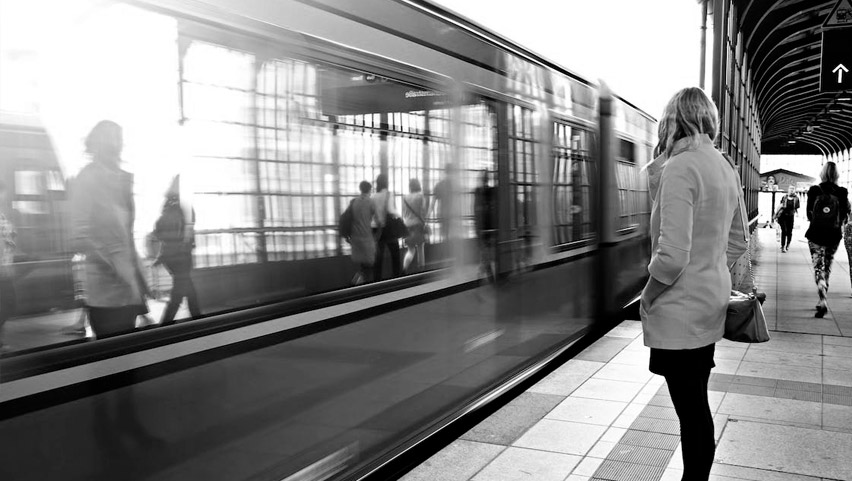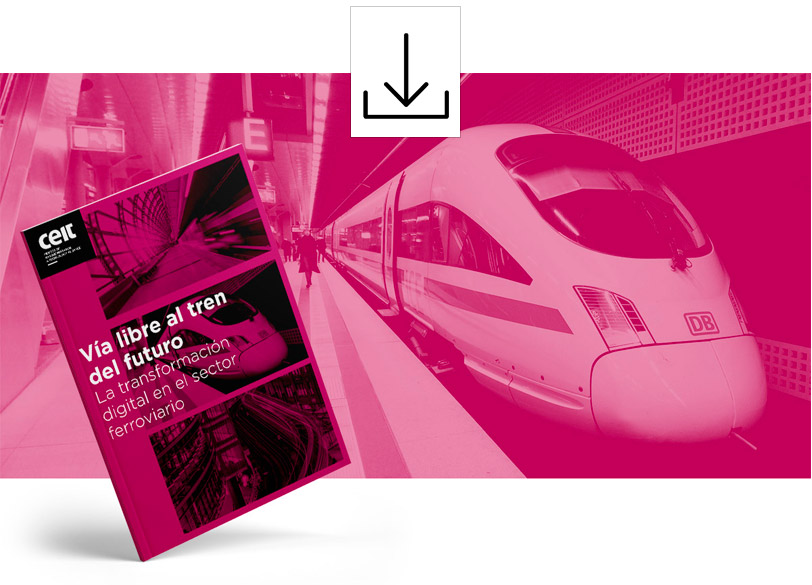News & Events
Blog post: Energy efficiency: key to consolidating leadership in rail

28 | 11 | 2022
Rail is the most sustainable means of passenger and goods transport, and a key commitment to the future for European institutions as a whole, both from the safety standpoint and that of sustainability. It is currently responsible for 0.4% of all greenhouse gas emissions associated with transport in the European Union and, according to data from the Ministry of Transport, Mobility and Urban Agenda, has become the only means that has managed to reduce both these emissions and energy consumption over the past few years.
However, despite the fact that rail is the most environmentally friendly means, the transport sector in general is responsible for a fourth of greenhouse gas emissions in the European Union, which is why the European Green Deal has set out as an objective, among others, to reduce 90% of emissions associated with this sector by 2050. This is an ambitious project, the aim of which is to optimise energy efficiency and the operational costs of rail so as to convert it into a more efficient, safer and environmentally friendly means of transport. This search for energy efficiency and sustainability in the rail sector can be approached from three different angles:
- Via optimisation of energy consumption of vehicles and their systems during the design phase.
- Via optimisation of the design of the electrical infrastructure and the application of energy recovery strategies.
- With a holistic increase in the energy efficiency of operations.
Whereas the first two strategies demand major investment and need to be implemented during the conception phase of new vehicles and infrastructures (and their systems), the third offers a substantial advantage: it can be undertaken on lines and rolling stock that is already in operation, albeit with less investment. In this regard, this strategy involving the search for efficiency needs to be a constant throughout the lifespan of the rail system – both from the vehicle design standpoint and operation of the infrastructure.
More efficient vehicles
The search for more efficient trains needs to be undertaken from a perspective that includes its more sensitive elements, i.e., the design of vehicles and their systems, their consumption and most suitable means of propulsion.
Design
The rail fleet needs to incorporate lighter materials to enable the total weight of convoys to be reduced and energy consumption thus optimised. Aerodynamics complements this section. As this study about the design of vehicles and efficiency explains, aerodynamic resistance accounts for 56% of consumption at high speed over long distance, 34% at high speed over medium distance, and 25% over long distance. This data suggests the possibility of increasing efficiency via research into new, more aerodynamic designs. Lastly, the consumption of auxiliary elements and those related to comfort of the trains themselves needs to be reduced, such as air conditioning, electrical devices and lighting, with a view to ensuring an environment that is decidedly efficiency oriented.
Consumption
The performance and operation of vehicles determine their consumption, which is why new energy management strategies related to driving need to be developed. Connected driver assistance systems (C-DAS) help to optimise performance and consumption during operation in real time, e.g., via optimised operation speed according to the train’s situation and that of the network, the operation profiles required (time and speed) and the extent to which assets have deteriorated. Operative efficiency can also be achieved in the design phase by establishing profiles for maximum speed, timetables and the line’s capacity to optimise the number of trains that can operate at the same time and their consumption.
These elements combined with the tools provided by digitalisation enable energy saving in each train to be increased, consumption throughout the fleet optimised and energy management even improved via customised supplies, taking into account the specific needs of each vehicle.
Propulsion
Any step towards energy efficiency and sustainability involves eliminating the consumption of fossil fuels – in this case, diesel oil – and managing to implement new, more modern and efficient propulsion methods. These may be both electrical and from other renewable sources such as hydrogen, as well as new energy storage technologies.
More sustainable infrastructure
The updating and renewal of rail infrastructures is a basic condition required to advance towards efficiency in this sector, and the first step involves completing electrification of railway lines – in Spain, the rest of Europe and the rest of the world. In our country, 35% of railway lines are not electrified and require the use of diesel-propelled trains. Gradual electrification is the most direct option, but this requires major capital investment both in order to purchase material and manage operations. Several courses of action are needed to develop a more efficient and sustainable infrastructure:
- Increasing the use of renewable energies to generate the energy that feeds the network.
- Using technologies such as digital twins and other simulation tools to ensure more accurate sizing of the electrical infrastructure, both during the design phase (optimisation of design) and the operation phase (optimisation of management).
- Pursuing a holistic style of energy management that may cover both vehicles and infrastructure, with a view to ensuring more efficient operations on two levels:
1. Rolling stock
The setting in motion of automatic driving systems without driver intervention, and the permanent activation of the connected driver assistance system (C-DAS), are two active efficiency agents that help to reduce energy consumption.
2. Operations
Energy recovery, such as while braking, is an option available in order to save energy that enables costs to be reduced and operational efficiency increased. It is calculated that a train may end up generating around 45% of energy absorbed in the braking process. Moreover, the foreseeable implementation of smart grids will enable energy to be managed in real time and consumption predictions established so as to prioritise the energy needs of the grid as a whole.
The commitment to these initiatives and their gradual implementation will help to increase energy efficiency in the rail sector as one of the most important factors in consolidating its leadership as the means of transport par excellence.
For more information, you can download our free ebook about railroads:

